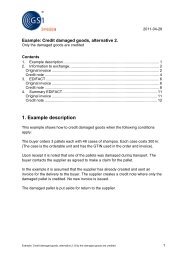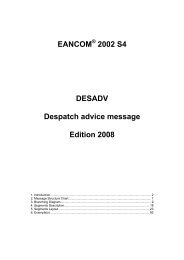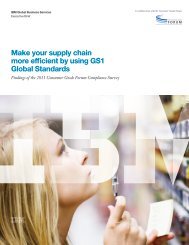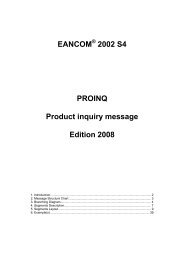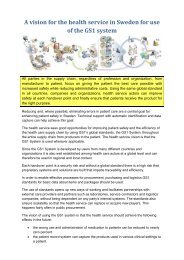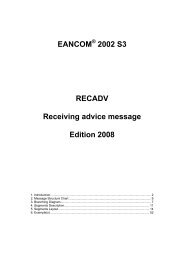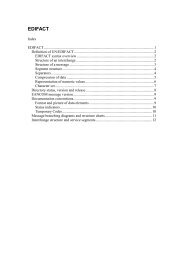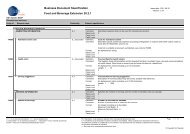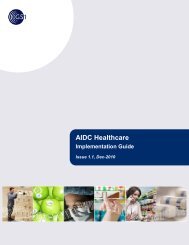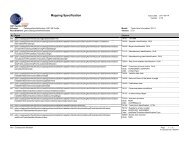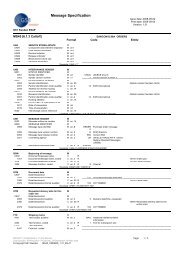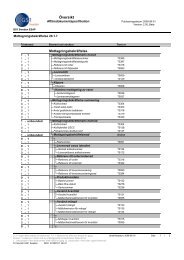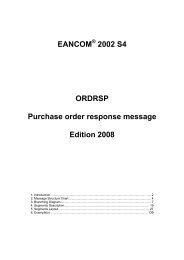TRACEABILITY OF BEEF - GS1
TRACEABILITY OF BEEF - GS1
TRACEABILITY OF BEEF - GS1
Create successful ePaper yourself
Turn your PDF publications into a flip-book with our unique Google optimized e-Paper software.
INTRODUCTIONFood safety has become a critical priority for the meat supply chain. However,rather than just identifying a more generalised commodity group, an effective andcost-efficient traceability system should accurately pinpoint any problem in foodsafety related to a specific geographical origin, slaughtering or processing facility,down to a farm or even to the single animal.The European Commission has recognised an urgent need to regain consumerconfidence in beef products and therefore believes in fast tracing of beef productsthroughout the supply chain. Consequently on the basis of a proposal from theEuropean Commission, the European Parliament and Council have adapted aregulation on compulsory labelling of beef (EC) 1760/2000 (here called the BeefLabelling Regulation) 3 . This Regulation became effective in all EU Member Statesfrom January 2001.The Beef Labelling Regulation aims to ensure a link between, on one hand, theidentification of the carcass, quarter or pieces of beef and on the other hand, theindividual animal or the group of animals from which they are derived. In particular,the beef label must contain the following 6 mandatory elements in human readableformat:- A reference number or reference code ensuring the link between the meatand the animal or a group of animals;- Country of birth; 4- Country/countries of fattening; 4- Country of slaughter;- Country/countries of cutting;- Approval number of the slaughterhouse and cutting hall(s).Adopting the EAN•UCC System, a unique identification numbering systemtogether with the use of UCC/EAN-128 bar codes can help users to comply withthe Beef Labelling Regulation. These Guidelines show how to implement thisRegulation in an efficient manner using the EAN•UCC System. However, in thisedition, the Guidelines do not contain Electronic Data Interchange (EDI) 5solutions for Tracking and Tracing. EDI messages will be included in future releasesof these Guidelines.Chapter 1 gives a short description of the organisation behind the EAN•UCCSystem followed by an impact analysis of the Beef Labelling Regulation on thebeef supply chain in chapter 2. The third chapter provides an explanation of thebar codes used. The main part of this document, chapter 4 onwards examines stepby step the implications of implementation of these Guidelines for the meat supplychain.These Guidelines contain links to other documents relating to the generalimplementation of the Beef Labelling Regulation and the EAN•UCC System.Trading partners in the beef supply chain are advised to contact the relevantnational authority of the Member State in which they wish to trade to establishany differences in national implementation or interpretation of the legislation.EMEG will aim also to highlight such differences by publishing a document fromtime to time to accompany these Guidelines, on the web site of EAN Internationalat http://www.ean-int.org3 A copy of Regulation (EC) 1760/2000 can be found by visiting the European Union’s official web site at http://www.europe.eu.int4 Compulsory as of 1 January 2002; see Regulation (EC) 1760/2000 Article 13 (5a)5 EANCOM®is the EAN•UCC standard for EDI messages4 >Traceability of Beef



